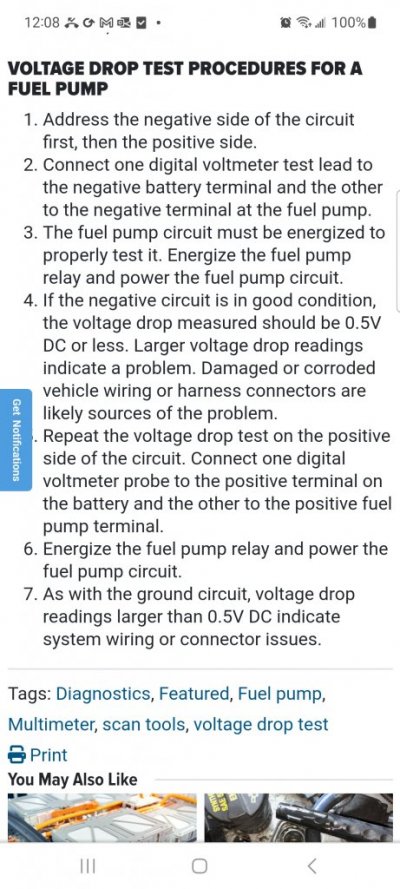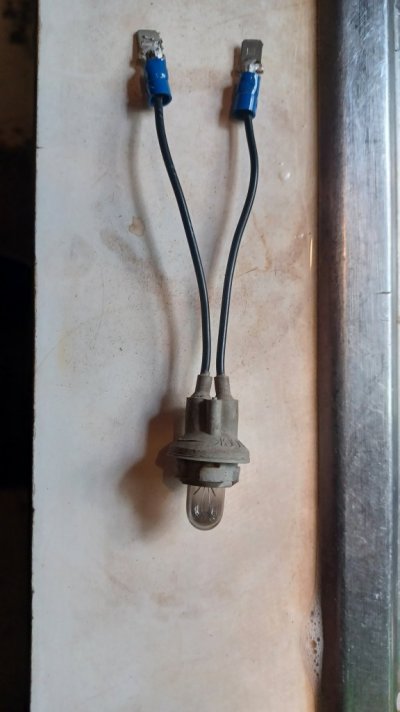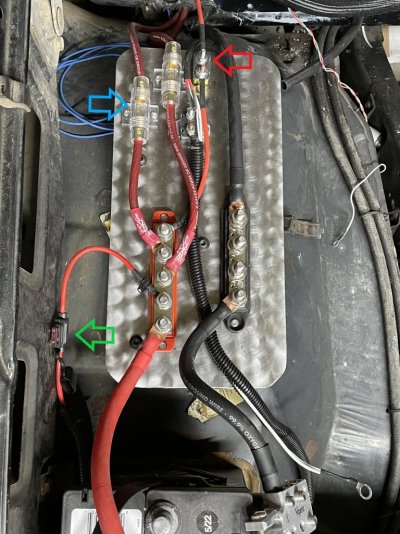Ricko1966
Full Access Member
- Joined
- Apr 11, 2017
- Posts
- 4,071
- Reaction score
- 5,932
- Location
- kansas
- First Name
- Rick
- Truck Year
- 1975
- Truck Model
- c20
- Engine Size
- 350
Many people keep stressing about chasing electrical gremlins. A volt drop test is a quick easy way to find lots of issues. This one's for a fuel pump,but substitute the word starter,head light, blower motor,etc for the word fuel pump. Another little tip when troubleshooting with a 12v test light unless your dealing with ecm or something delicate use an incandescent bulb test light not an LED or better yet use a sealed beam headlamp as a test light. Many times the circuit can light an LED but not be sufficient to run a fan, a headilight (see what I did there?)etc.
Attachments
Last edited:




